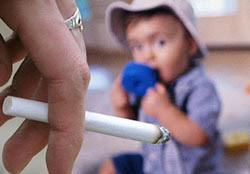The cost of cigarette smoking to business is high. Over 77 million work days are lost each year due to the effects of smoking. Business now spends over 50 billion dollars a year on medical care, accidents, lost productivity, and absenteeism.
Absenteeism rates average one-third higher for smokers because smoking severely reduces the effectiveness of the smoker’s natural immune system. Few employers realize that smoking employees can cost them up to $8,000 more per year than nonsmokers.
Two-thirds of the smoke from a burning cigarette goes into the environment. This smoke has twice the nicotine, five times the carbon monoxide, and fifty times the ammonia as the smoke that is directly inhaled. When smokers smoke, the people around them smoke, too. Annually, between 500 to 5,000 nonsmokers will die from lung cancer as a result of other people’s smoke.
If you’re concerned about the problem and would like to begin a campaign in your company to eliminate smoking, perhaps these suggestions will help:
- Establish support for a no-smoking policy. Involve members of top management.
- Provide educational literature to employees.
- Form a task force composed of diverse areas and management. Include at least one individual with research skills.
- Conduct a survey to inform employees that the topic is being examined. You’ll gather valuable data about your employee population.
- Establish a no-smoking policy. Begin educating and informing employees through a well-formed publicity campaign. Put up no-smoking signs, and offer information sessions.
- Offer a “stop smoking” program. You may decide to give bonuses or incentives. Perhaps give small monetary bonuses to nonsmokers, and offer smokers the same rewards if they give up smoking for six months.
- Phase in restrictions gradually. Employees react more positively to changes when given time to adjust.
- Deal with militant smokers. Smoking is a privilege not a right that is subject to other company rules. (Employees aren’t allowed to listen to radios full blast, for instance.)
- Be flexible. You may decide to make adjustments in the program.
Read More: http://socyberty.com/work/smoking-in-the-workplace/

























